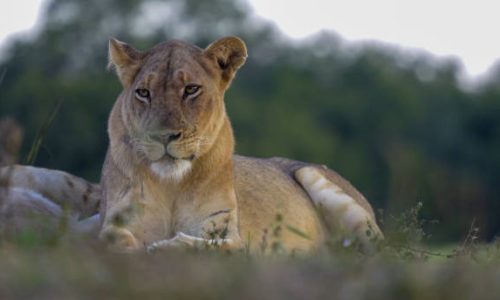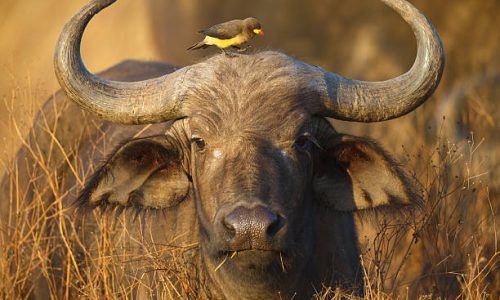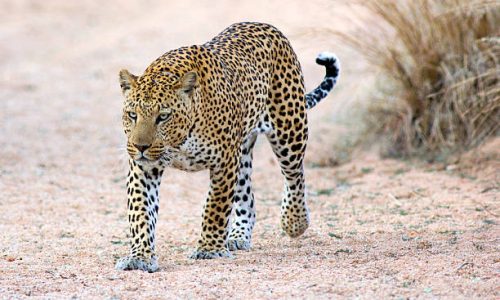The Big Five Animals of Africa: Facts, Traits and Where to see them on Safari
The Big Five Animals of Africa are; the Lion, African Elephant, Cape Buffalo, Leopard, and Rhinoceros. Africa’s wildlife is renowned worldwide, and at the heart of its natural wonders are the Big Five animals of Africa. Originally the term “Big 5” was used by big-animal hunters to explain the five most challenging animals to hunt on foot, the Big Five Animals of Africa now symbolize the ultimate safari experience. The Big Five Animals of Africa are celebrated for their natural strength, the beauty they possess as well as the ecological importance.
We’ll now dive into the fascinating world of the Big Five Animals of Africa; exploring their facts, characteristics, habitats, behaviors, and conservation challenges. Whether you’re a wildlife enthusiast or in preparation to plan for your next safari adventure, this guide has everything you need to know about the Big Five Animals of Africa
The Big Five Animals of Africa Safari Packages
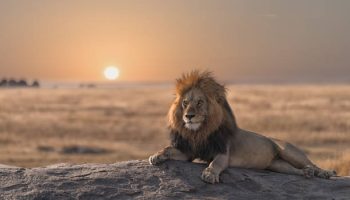
5 Days Serengeti & Gorilla Trekking
- Serengeti game drives + Bwindi Gorillas
- Fast-paced combo for time-crunched travelers
- Mid-range lodges & permits included
- Perfect for adventure seekers
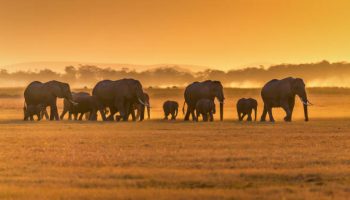
10 Days Serengeti Migration & Gorillas
- Wildebeest river crossings + Volcanoes NP gorillas
- Full migration cycle & primate encounters
- Luxury tented camps & rainforest lodges
- Ultimate wildlife double-header
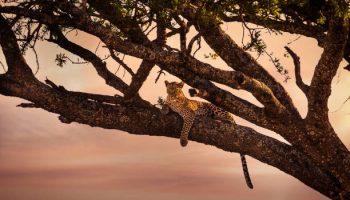
6 Days Big 5 Masai Mara & Migration
- Mara Reserve Big 5 safaris
- Witness wildebeest crossings at Mara River
- Cultural Maasai village visits
- Compact Kenya Safari itinerary
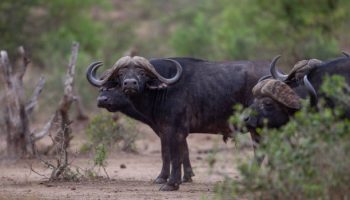
4 Days Serengeti & Rwanda Gorillas
- Serengeti game drives + Volcanoes gorillas
- Fly between Tanzania & Rwanda
- Budget-friendly with shared transfers
- Quick highlights for busy travelers

8 Days Tanzania & Zanzibar Beach
- Serengeti/Ngorongoro safaris + Zanzibar beaches
- Spice tours & Stone Town history
- Mix of bush lodges & beach resorts
- Ideal for sun-and-safari lovers

10 Days Luxury Tanzania & Kenya Safari
- Serengeti & Masai Mara luxury lodges
- Private guides & helicopter transfers
- Sundowners over the savannah
- High-end cross-border opulence
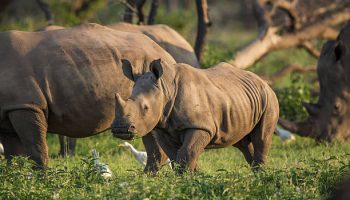
13 Days Tanzania & Rwanda Gorillas
- Serengeti, Ngorongoro & Volcanoes NP
- Chimpanzee tracking in Mahale
- Cultural tours in Rwanda
- Epic East Africa deep dive
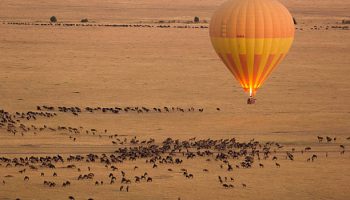
14 Days Uganda, Kenya, Tanzania, Rwanda
- Gorillas, Big 5 & migration across 4 countries
- Murchison Falls, Mara & Serengeti highlights
- Lake Bunyonyi & Kigali city tours
- Once-in-a-lifetime Pan-African odyssey
And Now! To the Big Five Animals of Africa
The African Lion; Scientific Name (Panthera leo) reigns supreme as the “King of the African Savannah,” a title earned through its commanding presence and social nature. Unlike other cats, lions live in groups called prides, which can include up to 30 lions – related females, their cubs, and a few adult males.
Key Facts and Characteristics
- Scientific Name: Panthera leo
- Appearance: Males are easily recognized by their thick hairly necks, which darken with age and signal dominance, while females are sleeker and more agile.
- Diet: As apex predators, lions prey on large ungulates like zebras, wildebeests, and antelopes.
- Habitat: They live in Savanna grasslands, and open woodlands across sub-Saharan Africa.
Behavior
Lionesses actually handle most of the hunting work, using teamwork to stalk and ambush prey, while males defend the pride’s territory. Their roar which can be audible up to 8 kilometers away, serves as both a communication tool and a warning to rivals. Surprisingly, lions spend up to 20 hours a day resting & sleeping to conserve energy for their next hunt.
Conservation Status
Lions are listed as Vulnerable by the IUCN due to habitat loss, human-wildlife conflict, and poaching. Protecting these majestic cats is vital for maintaining ecological balance.
Fun Fact
A lion’s mane isn’t just for show—darker, fuller manes often indicate a healthier, more dominant male, making them more attractive to females.
The African Elephant (Loxodonta Africana) is the largest land animal on Earth, a true marvel of nature with two subspecies: the savanna elephant and the smaller forest elephant.
Key Facts and Characteristics
- Scientific Name: Loxodonta Africana
- Appearance: Known for their large, fan-like ears and versatile trunks, which they use for feeding, drinking, and socializing.
- Diet: Herbivores, consuming up to 300 pounds of vegetation daily.
- Habitat: Savanna elephants roam grasslands and deserts, while forest elephants thrive in dense rainforests.
Behavior
Elephants are highly intelligent and live in matriarchal herds led by the oldest female. They communicate using low-frequency infrasound, inaudible to humans, and exhibit remarkable empathy—sometimes mourning their dead. Their trunks are multi-tools, capable of uprooting trees or delicately picking up small objects.
Conservation Status
Classified as Endangered, African elephants face threats from ivory poaching and habitat destruction. Conservation efforts aim to curb these losses and protect their populations.
Fun Fact
Elephants are one of the few animals that can recognize themselves in mirrors, a sign of advanced self-awareness.
The Cape buffalo (Syncerus caffer), often called the African buffalo, is a formidable member of the Big Five, known for its unpredictable temperament and strength.
Key Facts and Characteristics
- Scientific Name: Syncerus caffer
- Appearance: Robust and stocky, with curved horns that fuse into a bony “boss” on their heads.
- Diet: Grazers, feeding on grasses and herbs.
- Habitat: Savannas, swamps, and floodplains, typically near water sources.
Behavior
Cape buffaloes form herds that can number in the hundreds, relying on a strong group instinct for protection. When threatened, they become aggressive, even charging predators like lions to defend their young. This defensive nature has earned them a reputation as one of Africa’s most dangerous animals.
Conservation Status
Listed as Least Concern, their numbers remain stable overall, though localized declines occur due to habitat loss and hunting.
Fun Fact
Cape buffaloes have been known to mob lions in retaliation, showcasing their fierce loyalty to the herd.
The Leopard (Panthera pardus) is the most elusive of the Big Five, a solitary hunter renowned for its adaptability and camouflage.
Key Facts and Characteristics
- Scientific Name: Panthera pardus
- Appearance: Sleek and muscular, with a spotted coat that blends seamlessly into their surroundings.
- Diet: Opportunistic carnivores, preying on antelopes, monkeys, and even smaller predators.
- Habitat: Diverse environments, from rainforests and deserts to mountains.
Behavior
Leopards are nocturnal, stalking prey under cover of darkness. Their strength allows them to haul kills—sometimes twice their weight—into trees, safe from scavengers. They announce their presence with a distinctive rasping cough, one of many vocalizations in their repertoire.
Conservation Status
Leopards are Vulnerable, threatened by habitat loss, poaching, and human conflict.
Fun Fact
A leopard’s spots, called rosettes, are unique to each individual, much like human fingerprints.
The rhinoceros, represented in Africa by the black (Diceros bicornis) and white (Ceratotherium simum) species, is a prehistoric-looking giant defined by its horned snout.
Key Facts and Characteristics
- Scientific Name: Diceros bicornis (black); Ceratotherium simum (white)
- Appearance: Thick, armored skin and one or two keratin horns; white rhinos have square lips, while black rhinos have hooked lips
- Diet: Herbivores—white rhinos graze on grass, black rhinos browse on shrubs.
- Habitat: White rhinos favor grasslands; black rhinos prefer wooded areas.
Behavior
Rhinos are mostly solitary, except for mothers with calves. Despite poor eyesight, their acute hearing and smell make them formidable. They can charge at speeds of up to 50 km/h when provoked.
Conservation Status
Both species are Critically Endangered, primarily due to poaching for their horns, which are falsely believed to have medicinal value.
Fun Fact
Rhinos share a symbiotic bond with oxpeckers, birds that perch on their backs and eat ticks, providing natural pest control.
Where to See the Big Five Animals of Africa
Are you eager to witness the Big Five Animals of Africa on safari, Mpenzi Safaris Africa offers incredible affordable plans for these destinations:
- Kruger National Park, South Africa: A premier location hosting all Big Five Animals of Africa species.
- Serengeti National Park, Tanzania: Well, this one is famous for lions and the wildebeest migration, with elephants and leopards in plenty.
- Masai Mara National Reserve, Kenya: A biodiversity hotspot featuring the full Big Five Animals of Africa
- Chobe National Park in Botswana: Renowned for its massive elephant herds and other Big Five sightings. Surely you will see them
- Hwange National Park, Zimbabwe: Home to lions, elephants, buffalo, and leopards, with rhinos being reintroduced recently
- Uganda: The big five can be spotted in Murchison Falls, Queen Elizabeth National Park & Ziwa Rhino Sanctuary
When Is the Best Time to See the Big Five in Africa?
The optimal time to see the Big Five Animals of Africa is during the dry season that is usually in (May to October) in most African regions. Here’s why:
- Sparse Vegetation: Fewer leaves make animals more visible.
- Water Sources: Animals gather at rivers and waterholes.
- Weather: Cooler days mean more daytime activity.
Best Times to see Big Five Animals of Africa by Animal:
- Lions and Leopards: Dry season, when they’re near water or resting in open shade.
- Elephants and Buffalo: Dry months, as they stick close to water.
- Rhinos: Easier to see in open areas during dry seasons in places like Kruger National Park, Zziwa Rhino Sanctuary
The wet season (November to April) offers lush scenery and baby animals but can make sightings harder due to thick vegetation and dispersed water sources.
Threats and Conservation Efforts
The Big Five Animals of Africa face serious challenges, but conservation efforts are fighting to protect them.
Lets begin with Threats:
- Poaching: Elephants (ivory) and rhinos (horns) are prime targets.
- Habitat Loss: Farming and urban growth shrink Big Five Animals of Africa living spaces.
- Human-Wildlife Conflict: Lions and leopards clash with communities, often leading to killings.
- Climate Change: Disrupts food and water availability.
Conservation Efforts:
- Anti-Poaching Patrols: Rangers and drones guard parks and reserves.
- Community Programs: Locals benefit from tourism, encouraging wildlife protection.
- Relocation: Moving rhinos and elephants to safer habitats.
- Global Laws: Treaties like CITES ban trade in endangered species’ parts.
Photographing the Big 5: Tips for Great Shots
Capturing the Big Five Animals of Africa on camera is a thrilling challenge. Here’s how to do it well:
- Telephoto Lens: Use at least 200mm . this will give you safe, close-up shots.
- Golden Hours: Shoot at dawn or dusk for warm, soft light.
- Be Patient: Wait for natural moments like hunting or resting.
- Keep Distance: You are advised t0 zoom in rather than approaching animals for safety!
- Show Habitat: Include the landscape for context and bring out nature
- Focus on Eyes of the animals: Sharp eyes make photos pop and legit.
Last but not least, always follow the guide’s advice and prioritize the animals’ well-being. They are wild!
FAQ: Common Questions About the Big Five Animals of Africa
Q. Why are they called the Big Five?
They were named by hunters for being the toughest and most dangerous animals to hunt on foot. Now, they’re safari stars.
Q. Are the Big Five the biggest animals in Africa?
No, it’s about hunting difficulty, not size. Leopards, for example, are smaller than hippos but trickier to hunt.
Q. Why Aren’t Hippos and Giraffes Part of the Big Five?
Though hippos and giraffes are impressive, they didn’t qualify for the Big Five Animals of Africa due to the original hunting-based criteria:
Hippos (Hippopotamus amphibius): Despite being highly dangerous—killing more humans than any other large African animal—hippos weren’t as challenging to hunt. Their predictable presence near water made them less elusive than the Big Five.
Giraffes (Giraffa camelopardalis): As the tallest land animals, giraffes are peaceful and posed little threat to hunters unless provoked, lacking the ferocity of the Big Five.
The Big Five Animals of Africa were chosen for the danger and difficulty of tracking them on foot, not their size or fame.
Q. Can I see all five on one safari?
Yes, in places like Kruger or Maasai Mara, but it depends on luck and timing.
Q. Why isn’t the cheetah also included?
Cheetahs are fast but shy and less dangerous to hunt than the Big Five.
Q. Which is the most dangerous of the Big Five Animals of Africa?
The Cape buffalo, due to its unpredictable charges.
Q. Are the Big Five Animals of Africa endangered?
- Lions: Vulnerable
- Elephants: Endangered
- Leopards: Vulnerable
- Rhinos: Critically Endangered
- Buffalo: Least Concern
Q. How can I help conserve them?
Support eco-tourism, avoid illegal wildlife products, and donate to conservation groups.

